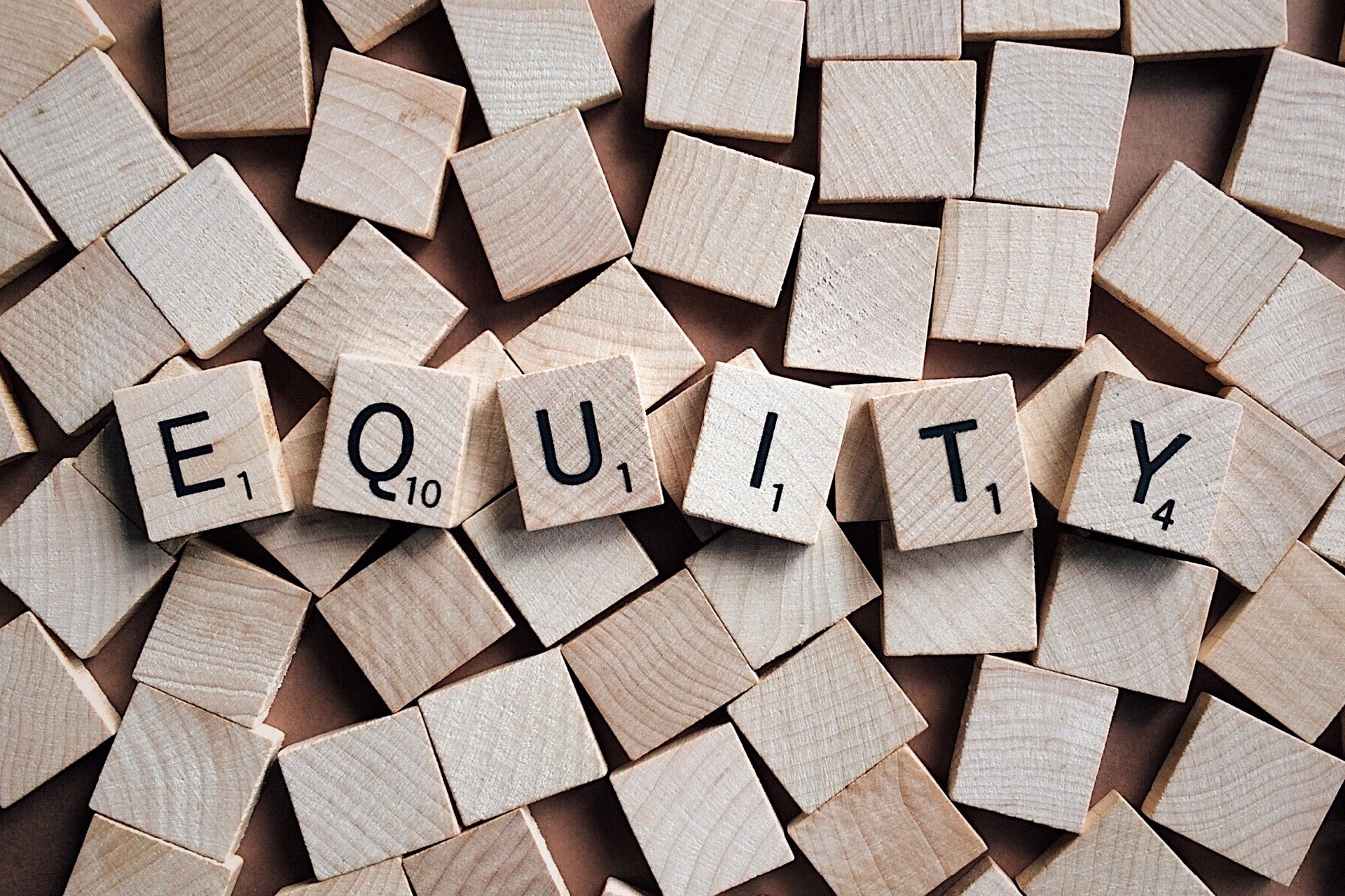As microcosms of the broader society, the structure of college and university courses can exacerbate racism and societal inequities, or it can work to dismantle them. Equity-centered design can help faculty and administrators review teaching and learning practices to close equity gaps.
Tina Moore, senior strategist at Intentional Futures (Every Learner Everywhere’s network partner) says, “Because we live in a system of oppression, nothing can be neutral. There is either inequity, or there is equity. And if we want to see more equity, we have to accept that and push toward figuring out how to be part of the solution and not part of the problem.”
One path to a solution is to look toward experts who work at the intersection of equity and design — the emerging methodology of equity-centered design — to learn ways to build equity into both process and end product. Or, as put another way by Caroline Hill, Christine Ortiz, and Michelle Molitor, the team behind the equityXdesign framework, “Racism and inequity are products of design. They can be redesigned.”
What is equity-centered design?
Equity-centered design is the practice of purposefully involving minoritized communities throughout a design process with the goal of allowing their voice to directly affect how the solution will address the inequity at hand. Equitable design acknowledges that equity doesn’t happen by chance but with intent and focus.
While it is a broad practice applicable to all kinds of institutional environments, equity-centered design lends itself well to education and learning and so has applications for instructional design.
Equity-centered design draws on some core component concepts:
- Equity generally refers to creating opportunities for equal access and success among minoritized populations by providing them with specific, targeted resources.
- Anti-racism is the active process of identifying and eliminating racism by changing systems, organizational structures, policies, practices, and attitudes so that power is redistributed and shared equitably.
- Human-centered design is an approach to problem solving that develops solutions through a strong, consistent focus on the human perspective by empathizing with the end user.
Human-centered design is an important concept in instructional design in higher education since it centers on the student experience. However, it has some potential shortcomings.
For example, though empathy is essential in human-centered design, a curriculum designed with empathy for the “average” student is unlikely to be a culturally relevant curriculum if average is assumed to mean white, cisgender, able bodied, neurotypical, heterosexual, and medium- to high-income.
Also, many solutions intended to engage more Black, Latino, Indigenous, and poverty-affected students can simply reproduce equity gaps if not considered critically. For example, student-led project-based learning may end up amplifying existing peer-to-peer dynamics that disadvantage minoritized students.
Equity-centered design is built on the human-centered design framework, says Moore, but solves some of its shortcomings.
Read more — Caring for Students Playbook: Six Recommendations
Equity-centered design confronts barriers
Equity-centered design avoids the broad framing of designing for “all students,” since instructors can unconsciously respond to the norm of designing only for students who historically live at the “center” (white, cis, etc.).
For example, Moore points to new Education Trust research that thoroughly explains how “income, the most commonly used substitute for race in policies, does not result in achieving racial justice . . . because Black and white students and families with the same income often have vastly different experiences and circumstances that can affect educational and financial outcomes.”
In other words, policies meant to broadly serve students impacted by poverty that are not race conscious produce solutions that will only benefit white poverty-impacted students and further minoritize Black and other students of color.
Moore describes equity-centered design as a way to find and confront barriers for minoritized students that may otherwise go unnoticed. Breaking down those barriers has broad benefits, but starting with a vague concept of “all students” risks reinforcing barriers for minoritized students.
Related reading — Disaggregating Learning Data to Support Equity Efforts: Resources for College and University Instructors
Equity-centered design in higher education
Intentional Futures has been formalizing its understanding of equity-centered design, also known as equity-based design, as part of the learning sessions they offer to clients and partners, including Every Learner Everywhere. Moore says she and her colleagues have been consulting with and learning from experts in equity-centered design and equity in education. (See Credits section below.)
These learning sessions introduce clients and partners to the process of equity-centered design by examining how they’re currently reproducing inequities, with the intention of setting them up to work with equity experts in their field to practice it.
Using that learning, Intentional Futures recommends an approach to equity-centered design in higher education that, among many things:
- Includes students who bring a variety of perspectives and experiences in the process
- Makes design decisions based on what would benefit the most minoritized students
- Focuses on celebrating and utilizing the assets, resources, and knowledge that minoritized communities already have
This can mean redesigning traditional classroom practices from the ground up. One example Moore brought up from her conversations with experts is the concept of “ungrading,” where professors center students in the assessment process rather than evaluating student assignments based on their own rubrics.
In the traditional grading model, evaluation rubrics are generally based on white-centric norms of classroom excellence, as well as a professor’s own internal biases, says Moore. Students end up shaping their assignments to the prescribed way of doing things rather than using their inherent capabilities to demonstrate their knowledge.
With ungrading, the instructor still defines the assignment, then assesses student work by having conversations with students and providing formative feedback. Ungrading “allows the student to drive what they believe an excellent paper or project would look like,” says Moore. This centers their own assets and experience, and it helps students work through their own internalized assumptions about who gets to define excellence.
Giving this agency to the student shapes how they approach the world beyond their education. “It helps them understand they have inherent capabilities and assets they can bring to any table that they decide to sit at,” says Moore.
Related reading — 3 Steps for Centering Student Care in Assessments
Best practices in equity-centered instructional design
To begin designing with equity, Moore encourages institutions and instructors to ask themselves how racism, sexism, and other systems of power and privilege specifically show up in their classroom, department, and institution.
If you’re new to this work, you may not have an immediate answer to that, Moore notes. But asking the question will open up a path to learning more and exploring possible solutions.
Moore also recommends remembering that creating a more equitable classroom is a marathon, not a sprint. It can also be a very emotional journey full of self-work and learning, so it’s important to take breaks and reflect rather than react emotionally.
“Remember that this is a personal journey,” says Moore. “It’s lifelong. And the society we’re pushing for requires a lot of creativity and imagination, because none of us have seen it before.”
Additional resources for equity-centered design
To learn more about the foundational concepts in equity-centered design, and for practical guidance, Moore recommends the following resources that have informed the work at Intentional Futures:
- equityXdesign is a learning studio offering a free course on equitable design. They also provide a good overview of equity-centered design in the white paper equityXdesign: A Process for Transformation.
- Why Only Race-Conscious Policies Can Fix Racism in Higher Education is a report from The Education Trust on the importance of taking a race-conscious approach to racial equity work in higher education.
- The Pullias Center for Higher Education at The University of Southern California maintains a comprehensive list of racial equity research.
- New York University offers a Faculty Toolkit on Digital Inclusion.
- Every Learner Everywhere’s resource library includes several resources for designing courses with equity.
- The Stanford University Hasso Plattner Institute of Design created resources for an Equity-Centered Design Framework.
In addition to the resources above, Moore says Intentional Futures, while developing services for equity-centered design in higher education, has benefited from interviews with and the prior work of many other experts, including, but not limited to:
- George Aye, Co-Founder of Greater Good Studio
- Maria Baez, Clinical Associate Professor and Director, Bilingual Extension Program
- Paul Gorski, Founder of Equity Literacy Institute
- Carolyn Heinrich, Chair of the Leadership, Policy and Organizations Department, Professor of Public Policy and Education at Vanderbilt University
- Karen Jackson-Weaver, Associate Vice President, Global Faculty Engagement and Innovation Advancement at New York University
- D-L Stewart, Professor in the School of Education and Co-chair of the Student Affairs in Higher Education program at Colorado State University
- Heather Woodley, Clinical Assistant Professor of TESOL, Bilingual Education, and Foreign Language Education at New York University
Download Getting Started with Equity: A Guide for Academic Department Leaders
Originally published November 2020. Updated September 2021 with additional information and references.



